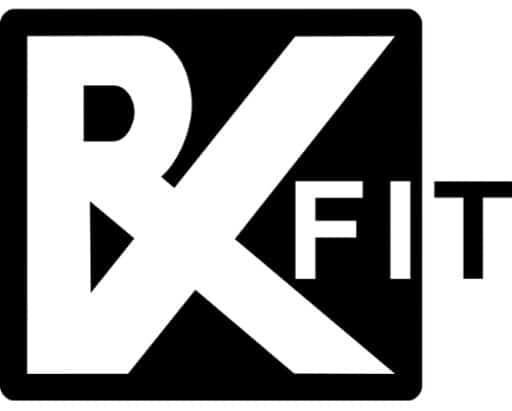Push-ups are an incredibly popular exercise, not only because of their ease and accessibility but also due to the many benefits they offer. From improved strength and muscle tone to increased cardiovascular health, push-ups can be a valuable part of any fitness routine.
Unfortunately, however, shoulder pain push-ups occur regularly. It is therefore important to understand the potential causes of shoulder pain during push-ups and take the necessary steps to alleviate it. Knowing how to properly perform push-ups while avoiding injury will ensure that you can reap all of their amazing health benefits without any negative side effects.
In this post, we will explore the potential causes of shoulder pain during push-ups and what you can do to prevent or alleviate it.
Understanding Shoulder Pain during Push-Ups
Understanding what is shoulder pain and what could be causing it is an important first step in addressing the issue. Here’s what you need to know:
What is Shoulder Pain?
Shoulder pain is any discomfort experienced in the shoulder joint or surrounding muscles. It can range from a mild ache to sharp, stabbing pain and be either short-term or long-term depending on the cause.
The nature of the pain may vary from person to person, but in general, it is usually described as an aching or burning sensation. It may be accompanied by stiffness, swelling, or redness in the area.
Knowing how to describe your pain will clue your doctor to the potential cause.
What are the Primary Causes of Shoulder Pain?
Shoulder pain can have a variety of causes, ranging from muscle strain or age-related wear and tear to an underlying medical condition.
Common causes of shoulder pain include:
Rotator Cuff Injury/Tendonitis
A rotator cuff injury is one of the most common causes of shoulder pain and can be caused by either overuse or direct trauma. It can be very painful and limit mobility in the shoulder joint. Rotator cuff exercises can help with rehabilitation.
Bursitis
Bursitis is inflammation of the bursae, which are small sacs filled with fluid near your shoulder joint. It can cause pain, stiffness, and swelling in the area.
Frozen Shoulder (Adhesive Capsulitis)
A frozen shoulder is a condition characterized by stiffness, pain, and restricted movement of the shoulder joint. It can last for months or even years if left untreated.
Arthritis
Arthritis is a general term used to describe inflammation of the joints. There are many different types of arthritis, but they all cause pain, stiffness, and swelling in the affected joint.
Muscle Strain
Muscle strains are caused by overstretching or tearing a muscle. This can be very painful and limit movement in the shoulder area.
Dislocated Joint
A dislocated joint is the result of an injury or trauma that causes the bone to move out of its normal position. This can be very painful and can limit mobility in the affected area, such as shoulder or even wrist mobility.
Fracture
Fractures of the shoulder can cause significant pain and limit movement in the joint.
What are the Different Types of Shoulder Pain and Their Symptoms?
The type of shoulder pain you experience depends on the underlying cause. For example, rotator cuff tendonitis typically causes a deep, aching pain that worsens when the arm is lifted. A frozen shoulder usually causes stiffness, reduced range of motion, and pain with movement. Arthritis is usually characterized by stiffness, swelling, and sharp pain in the joint.
It’s important to note that shoulder pain can be a symptom of a more serious condition, so if your pain is severe or persists for more than a few days, it’s important to see your doctor.
What are the Risk Factors For Shoulder Pain During Push-Ups?
Several factors can increase your risk of shoulder pain during push-ups, including poor form, weak shoulder muscles, and existing medical conditions.
Poor Form
Poor form can put unnecessary strain on your shoulders and increase the risk of injury. Make sure you are using the proper technique when performing a push-up to ensure that your shoulders are in a safe position.
Weak Shoulder Muscles
Weak shoulder muscles can increase your risk of shoulder pain during push-ups. Strengthening the muscles in your shoulders and upper back will help to reduce the strain on your shoulders and minimize the risk of injury.
Existing Medical Conditions
Certain medical conditions, such as arthritis or rotator cuff tendonitis, can increase your risk of shoulder pain during a push-up. If you have an existing medical condition, talk to your doctor before starting any exercise program. They may be able to recommend modifications or alternative exercises that are better suited to your needs.
Addressing Shoulder Pain During Push-Ups
If you experience shoulder pain during a push-up, you must follow the following advice:
Stop and Rest
If your shoulder pain is severe, stop and rest until the pain subsides. Continuing to exercise can make the injury worse.
Ice
Applying ice to the affected area for 15-20 minutes several times a day can help reduce swelling and inflammation.
Seek Professional Help
If your shoulder pain persists or worsens, it’s important to seek professional medical advice. Your doctor may recommend that you see a physical therapist, or receive medications to help reduce pain and inflammation.
The Role of Form and Technique
Maintaining proper form during a push-up is important to avoid shoulder pain. Here’s a step-by-step process showcasing the proper form of a push-up:
- Begin in a plank position with your hands directly below your shoulders and your body in a straight line from your head to your toes.
- Lower yourself down until your chest almost touches the ground, maintaining control of the movement throughout.
- Push back up to the starting push-up position, keeping your body tight and straight.
It’s also important to practice proper breathing techniques while performing a push-up. Inhale as you lower down and exhale as you push back up. Also, make sure your hands are directly under your shoulders, and avoid arching your back or excessively protracting (rolling forward) your shoulder blades.
The Best Shoulder-Strengthening Exercises
Prevention is the best way to reduce your risk of shoulder pain during a push-up. Strengthening the muscles in your shoulders and upper back can help to protect your joints from injury and make push-ups easier. Here are some of the best exercises to strengthen your shoulders:
Shoulder Press
To do a shoulder press:
- Stand or sit with your feet shoulder-width apart and hold a light weight in each hand just above shoulder height.
- Push the weights up over your head, stopping when your elbows are straight but not locked.
- Gently lower the weights back to starting position, maintaining control of the movement throughout.
Reverse Flyes
To do reverse flyes:
- Stand with your feet slightly wider than shoulder-width apart and hold a light weight in each hand.
- Bend forward from the hips, keeping your back straight and maintaining a neutral spine position.
- With your arms extended, raise the weights out to your sides until they are level with your shoulders.
- Slowly lower the weights back down and repeat.
Best Push-Up Modifications To Prevent Shoulder Pain
If you find a regular push-up too difficult or painful, some modifications can make them easier while still allowing you to work on strengthening your shoulders and upper back.
Elevated Push-Ups
Try doing a push-up with your hands elevated on a bench or step. This reduces the load on your shoulders while still allowing you to work on strengthening your chest, arms, and core.
To perform an elevated push-up:
- Place your hands on a bench or step with your feet planted firmly on the ground.
- Lower yourself down until your chest almost touches the bench, maintaining control of the movement throughout.
- Push back up to starting position and repeat for 20 more reps.
Wall Push-Ups
Wall push-ups are a great way to start building strength in your shoulders if a regular push-up is too difficult or painful.
- Start by standing facing a wall, approximately two feet away from it, and place your hands flat against the wall just above shoulder height.
- Then press into the wall as you bend at the elbows and lower your upper body towards it before pushing back up to starting position.
- Repeat for 10–15 repetitions.
Preventing Shoulder Pain During Push-Ups
We recommend the following strategies to help reduce the risk of shoulder pain during a push-up:
Always Remember To Warm-Up
Before you start any exercise routine, make sure to warm up your muscles with some light exercises or dynamic stretching. Warming up can help to increase blood flow, reduce muscle stiffness and improve your range of motion.
3 Different Stretching Techniques To Prepare the Shoulder Muscles
Stretching can help to prepare the muscles in your shoulders for push-ups, increasing flexibility and reducing the risk of injury. Try these three stretching techniques:
1. Internal Rotation Stretch
- Standing with your arms at your sides, grab one arm above the elbow with the opposite hand and rotate it inward towards your body.
- Hold this stretch for 15–20 seconds before switching sides.
- Repeat this exercise 3–5 times on each side.
2. Doorway Chest Stretch
- Stand in a doorway with your arms extended out to the sides and your palms facing forward.
- Push your chest forward while keeping your arms straight until you feel a stretch in the front of your shoulders, then hold for 15–20 seconds.
- Repeat this exercise 3–5 times.
3. Wall Slides
- Stand facing a wall and place your hands flat against it just above shoulder height, with your palms facing down.
- Slide your arms up the wall until they’re straight but not locked and then back down to starting position.
- Repeat this exercise 10–15 times.
The Role of Shoulder Mobility Exercises in Shoulder Pain Prevention
Shoulder mobility exercises can help to improve the range of motion within the joint, which can reduce the risk of injury and improve performance during a push-up or other activities that use the shoulders extensively. Try these three simple exercises to increase shoulder mobility:
1. Arm Circles
- Stand with your feet hip-width apart, arms outstretched and palms facing down.
- Slowly draw circles with your arms in one direction for 15–20 seconds before reversing the direction.
- Repeat this shoulder exercise 3–5 times.
2. Shoulder Rolls
-
Standing or sitting up straight
- Slowly roll your shoulders forward 10 times then backward 10 times.
3. Scapular Retractions
- In a standing or seated position, extend your arms out in front of you at shoulder height with your palms facing down.
- Draw your shoulders back and squeeze them together before releasing them back to starting position.
- Repeat this movement 10–15 times.
Don’t Forget to Rest and Recover
After completing any exercise routine, it is important to allow your muscles time to rest and recover. Make sure you take a break from push-ups after each session and make sure you are getting adequate sleep to help aid muscle repair. Additionally, foam rolling can be beneficial for reducing tension in the shoulders and helping them to recover quicker.
FAQs
What Are the Common Causes of Shoulder Pain During Push-Ups?
The common causes of shoulder pain during a push-up include poor push-up form, overuse or incorrect technique. Poor posture and weak shoulder muscles may also contribute to shoulder pain.
What Exercises Can I Do To Prevent Shoulder Pain During Push-Ups?
We recommend the following strategies to help reduce the risk of shoulder pain during a proper push-up: always remember to warm up before exercising; use stretching techniques to prepare the shoulder muscles; incorporate mobility exercises into your routine, such as arm circles, shoulder rolls and scapular retractions; and don’t forget to rest and recover between sessions.
Can Shoulder Pain Be a Sign of a More Serious Condition?
Shoulder pain can be a sign of something more serious, such as a rotator cuff tear or shoulder impingement. If your pain persists and/or worsens during or after push-ups, consult a doctor to get an accurate diagnosis and appropriate treatment.
How Long Should I Rest if I Experience Shoulder Pain During Push-Ups?
If you are experiencing shoulder pain while doing a push-up, take a break from the exercise and give yourself time to rest and recover before trying again. You may also want to consider reducing the number of repetitions until you have built up more strength and stability in your shoulders.
Is It Necessary To Stop Doing Push-Ups Altogether if I Experience Shoulder Pain?
It’s not necessarily necessary to stop doing push-ups altogether if you experience shoulder pain. However, it is important to take breaks and give your shoulders time to recover in order to avoid any further injury. If the pain persists and/or worsens during or after push-ups, seek medical advice.
Conclusion
Shoulder pain during push-ups can be avoided by focusing on proper push-up form and using stretching, mobility exercises and rest days to prevent any injuries from occurring.
Additionally, listen to your body – if you experience any pain while doing push-ups it’s important to take a break from them until you have built up more strength and stability in your shoulders.
Remember that persistent shoulder pain could be a sign of a more serious condition, so it is important to get a professional diagnosis if you experience pain that does not go away.


